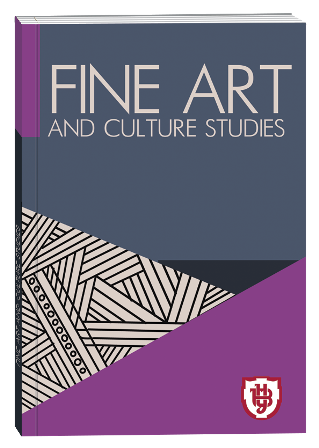TRANSFORMATIONS OF AUDIOVISUAL CULTURE: FROM GUTENBERG'S PRINTING MACHINE TO SOCIAL MEDIA
DOI:
https://doi.org/10.32782/facs-2023-4-28Keywords:
audiovisual culture, information technologies, social media, multimediaAbstract
The purpose of the study is to trace the main stages of the formation of audiovisual culture in the context of information and technological development, with an emphasis on the role of social media and people. The research methodology involves the use of general scientific methods (analysis, synthesis, generalization of results, etc.), as well as approaches, in accordance with the paradigm of interdisciplinarity integrated from cultural studies, medieval studies, history, media psychology. The concept of "soft technological determinism" became the foundation of the connection between culture, man and social technologies. The scientific novelty of the research lies in the substantiation of the "audiovisual medial turn" in modern culture. Conclusions. The further development of audiovisual culture is influenced by Web 2.0 information technologies, the development of social media based on them, virtual reality, the popularity of audiovisual content and the corresponding video hosting services that allow it to be consumed, produced and distributed. Such an audiovisual turn occurred even earlier and was determined not only by technological changes, but also by intra-personal guidelines, when sensory-perceptual processes began to be understood as those that, due to the activation of the senses, provide a connection between the inner and outer world of a person for comprehension and representation of the surrounding reality is sometimes much better than verbal-logical ones. Not the least role was played by the visual and clip thinking of the young generation, fully integrated with modern technologies. Currently, these factors, most mediated, in our opinion, by the development of social media, do not significantly affect the formation of audiovisual culture as a dominant feature of the modern stage of the development of civilization, but strengthen its existing and generate new characteristics, including as a special field of activity. In general, the sharp penetration of social media, which are derivatives of information and technological progress, into all aspects of everyday life indicates the socialization of technology. Therefore, in the conditions of simplified production, distribution and perception of audiovisual content, it is possible to state an "audiovisual medial turn", the vector of which is directed to a specific plane: the "social" person of A. Mol and the "telematic" person of J. Baudrillard becomes an "audiovisual" person.
References
Град Н. Я. Відеовербальний текст як об’єкт вербальної і невербальної комунікації у сучасних мультимодальних студіях. Молодий вчений. 2015. № 5(2). С. 153-157. URL: http://nbuv.gov.ua/UJRN/molv_2015_5(2)__39.
Кастельс М. Информационная эпоха: экономика, общество и культура. URL: http://www.gumer.info/bibliotek_Buks/Polit/kastel/05.php
Лісневська А. Л., Фруктова Я. С. Аудіовізуальний контент: до питання ризиків впливу сучасних медіа. Інтегровані комунікації. 2019. № 2 (8). С. 47-54.
Проценко Д., Тупченко Д. Огляд підходів до регулювання нових конвергентних аудіовізуальних засобів масової інформації: міжнародний досвід. Київ, 2012. 110 с.
Тормахова А. М. Аудіовізуальні практики нових медіа та їх комунікативний характер. Вісник Національної академії керівних кадрів культури і мистецтв. 2021. № 3. С. 42-46.
Castells M. The Rise of the Network Society. Wiley-Blackwell, 2010. 625 р. URL: https://deterritorialinvestigations.files.wordpress.com/2015/03/manuel_castells_the_rise_of_the_network_societybookfi-org.pdf
МасLuen М. The Gutenberg Galaxy. The Making of Typographic Man. Toronto, 1962. 293 p. URL: http://www.gumer.info/bibliotek_Buks/Culture/makl/02.php
Silverman L. K. Upside-Down Brilliance: The Visual-Spatial Learner. Denver: DeLeon. 2002. Р. 28-105.







